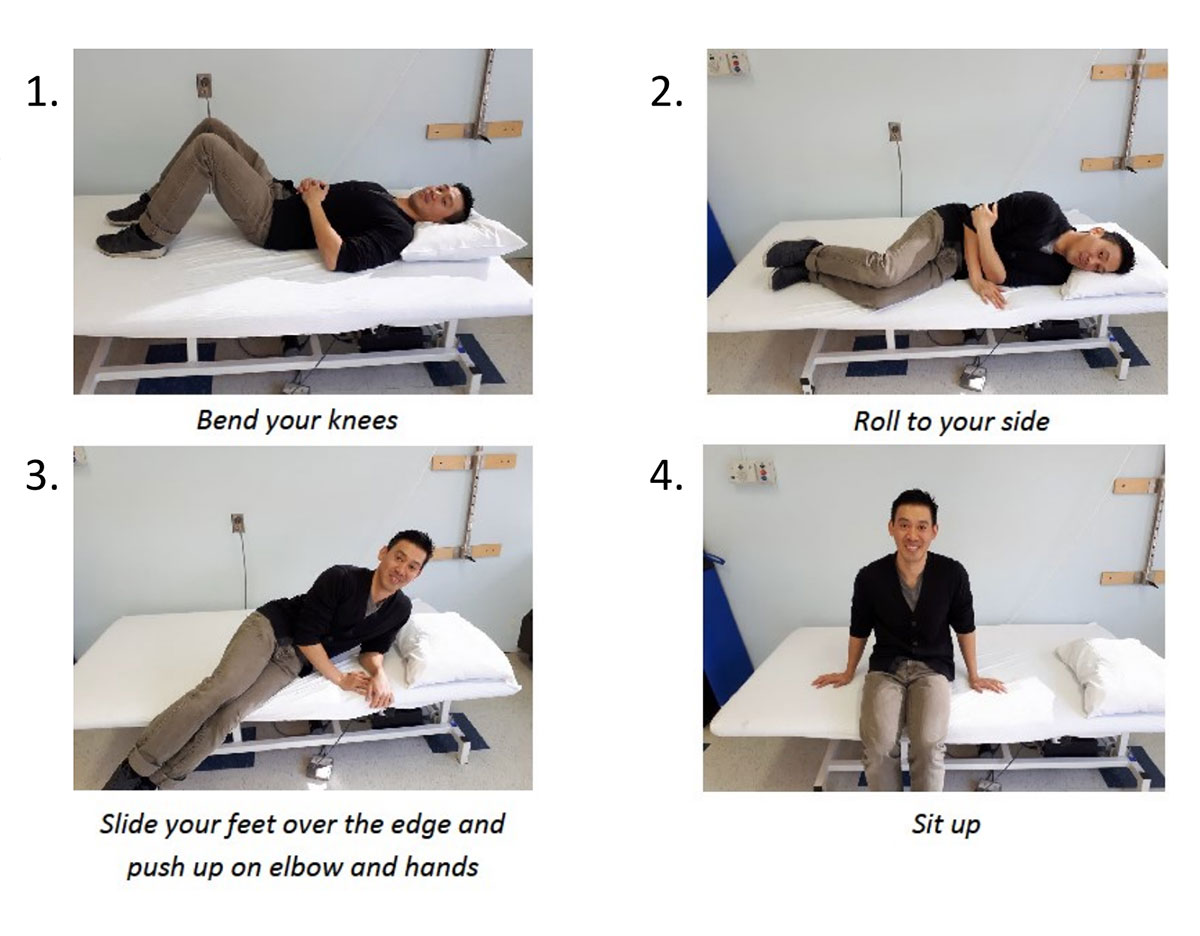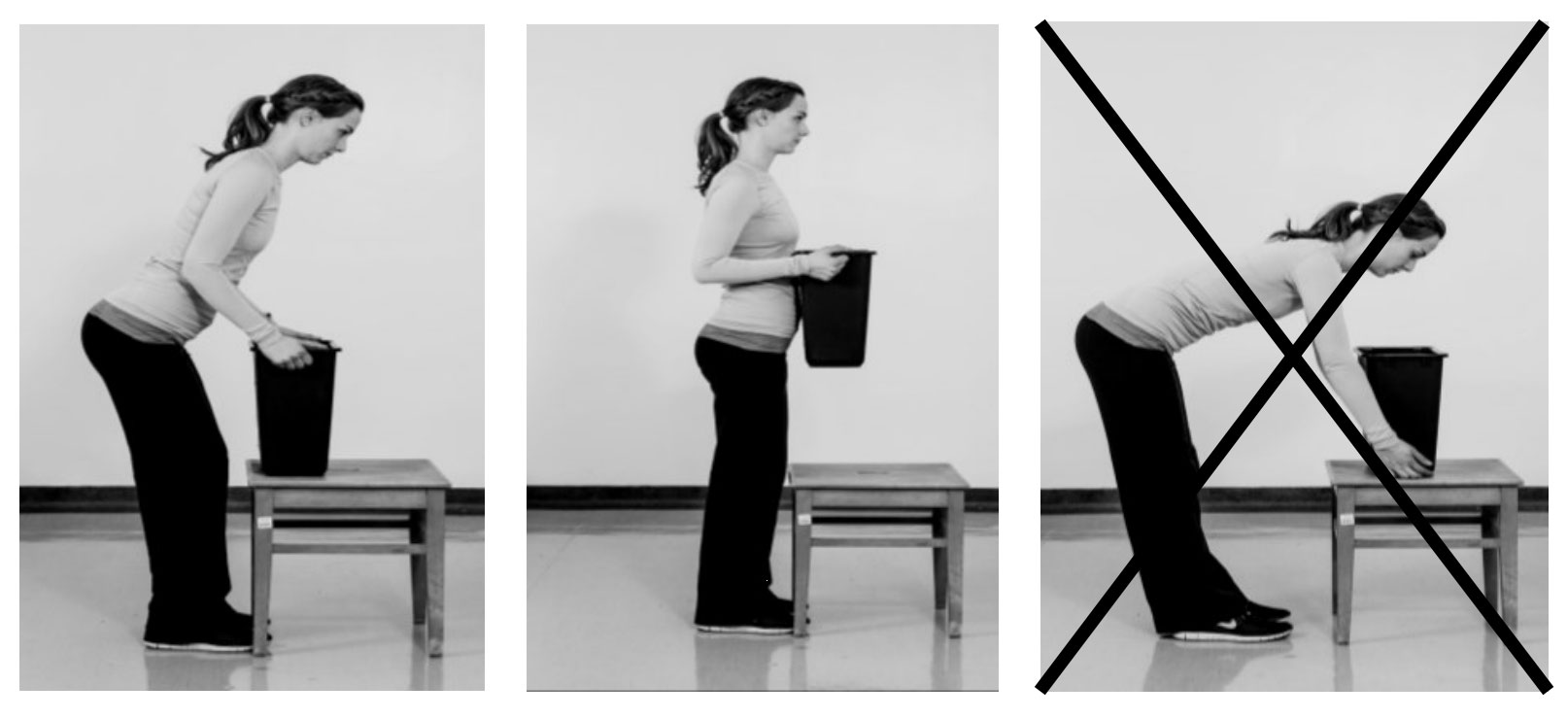What to expect after spinal surgery
Download this page as a PDF or read below
After spinal surgery there are no restrictions in the way you are allowed to move. Bending or moving may or may not aggravate your pain. Listen to your body and avoid painful movements or positions. You will not typically require any spinal braces after surgery (your doctor/health care team will inform you specifically if you do). Most people will go home on the day of surgery or stay 1 night at the hospital. Depending on the type of surgery you had, some people may need a longer stay. Your surgeon and health care team will let you know. Please follow the instructions from your surgeon if it is different than the information in “A Guide for Patients Having Orthopaedic Surgery” or this handout.
What to Expect
After surgery you may find that bending over or twisting is difficult. Reaching across your body may be uncomfortable. You may also notice that your energy level is lower and you need to plan more rest time during the day. Below are some helpful strategies for your daily activities to make your recovery safer and less painful.
Sleeping and Getting Out of Bed
- You may sleep on your back or side.
- If you sleep on your side, you may want to hug a pillow and put a pillow between your legs for comfort.
- Use the log-roll technique, when you are getting out of bed:
- Bend your knees,
- Roll to one side with shoulders and hips as one unit as if you are a log,
- Slide your feet over the edge of the bed and push up with your elbows and hands,
- Sit up.

Activity
- You can be up and about as much as is comfortable, but gradually increase your daily activity over time.
- Avoid sitting for longer than 30-40 minutes at a time. Change your positions often to relieve stiffness and pain.
- You are encouraged to walk daily as it is the best form of exercise after surgery. Walking increases blood flow, helps prevent constipation and muscle soreness. It is better to walk short distances more often than to walk longer distances. You can walk a little bit more each day if you are feeling well.
- You may need the support of a walker or cane.
- You can climb stairs, ensure you hold on to a secure handrail and move slowly.
- If you need physiotherapy, your surgeon will provide you with a referral at your 6-week clinic visit.
Falls Prevention
- Take precautions to prevent falls:
- Remove or tape down loose rugs.
- Keep things you use frequently within easy reach - i.e. moving items in high cupboards to counter height or putting items in your pockets.
- Reach into low cupboards by squatting down. Bend your knees and hips. Keep your back straight.
Bathing
- Sponge bathe for the first 4 days. By Day 5 you can shower with a plastic bag covering your dressing, but do not allow direct water pressure on it. The dressing should be kept dry. The dressing can be removed 7 days after the surgery, but leave on the steri strips (white pieces of tape under the dressing) . Do not submerge the incision in a bath for 10 days.
- A bath seat or bath bench will allow you to sit in the shower if needed and conserve energy.
- Having a non-slip bath mat as well as grab bars installed in your tub or bath will reduce the risk of falling.
- A long handled sponge may be helpful for washing.
Dressing
- In the beginning, it is safer and easier to get dressed while sitting down. Progress to your usual way once you are comfortable.
- Underclothes, pants, socks and shoes can be put on by crossing your legs and bringing your foot towards you.
- You may also find a long-handled shoe horn or sock aid useful.
- A “reacher” may be handy for retrieving dropped items. Ask your occupational therapist for further information about this.
Lifting
- Avoid lifting anything that would cause excessive strain. Usually lifting weight up to 10 lbs is considered safe.
- It is important to use proper technique when lifting:
- Keep your back straight,
- Bend at the knees and lift with your legs,
- Keep what you are lifting close to your body.

 For information about surgery at Sunnybrook, refer to “A Guide for Patients Having Orthopaedic Surgery”
For information about surgery at Sunnybrook, refer to “A Guide for Patients Having Orthopaedic Surgery”
For more information on spinal surgery visit: sunnybrook.ca/spine or whenithurtstomove.org/spine/






